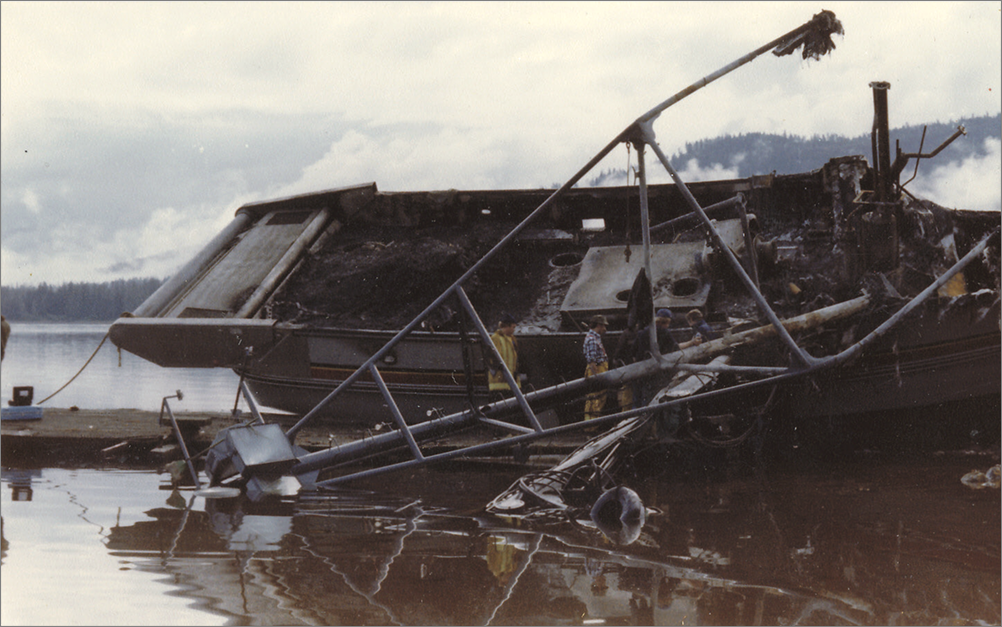Defense attorney Phil Weidner started by having Trooper Anderson write out a list of things he could have fingerprinted — but didn’t. The all-important Investor skiff? “No.” The Investor hull? “No.” The crewquarters? “No.” A bucket found near the wheelhouse? “No.” A red gas can nozzle? “I don’t know.” What Weidner didn’t say: even if troopers had taken fingerprints — and found John Peel’s prints among them — he would have argued, “of course John’s prints were there, he was friends with the crew.”

The next thing Weidner got Anderson to admit was that troopers might have “stacked the deck” against John Peel by putting eight of his pictures in a photographic line-up that contained less than thirty photos. That was among the things “he” did do — “he” being a stand-in for the entire trooper organization — and in Weidner’s telling he should have done less.

Even with these admissions, Weidner was far from finished. He insinuated that Anderson had destroyed a page in his trooper notebook. He based his opinion on the observation that the trooper made no entries in his notebook from 2:30 on the afternoon of the fire to 7:30 that night. And yet, Weidner pointed out, he had made detailed entries up to that point.
Anderson explained, sensibly, that he wasn’t writing in his notebook because he was busy doing other things. Like, you know, trying to find fire-fighting equipment and, failing that, trying to wrangle surrounding vessels into tamping down the raging fire.
Soon, Weidner was asking yet another pointed question, this time about the tough treatment of Dawn Holmstrom. He intimated that their approach with this witness at the grand jury was “an attempt to manufacture testimony.”
“I don’t think so,” Anderson said, denying the assertions.
“Wasn’t the purpose of that interrogation to try and get incriminating information against Mr. Peel?” Weidner seethed.
“It was to try and find out if she knew more than what she was saying,” Anderson replied.
Weidner dragged out the letter the Rosellini letter, in which Dawn Holmstrom alleged she was intimidated by Ketchikan prosecutors. He took Anderson through every incriminating line. More than once, the trooper was moved to say, “That never happened.” Now the jury had a choice. Either Dawn Holmstrom was a liar. Or Bob Anderson was. Trouble was, there was another trooper on deck. And he was about to get the same treatment.
Excerpts from the unpublished original manuscript, “Sailor Take Warning,” by Leland E. Hale. That manuscript, started in 1992 and based on court records from the Alaska State Archive, served as the basis for “What Happened in Craig.”
Copyright Leland E. Hale (2020). All rights reserved.

Order “What Happened In Craig,” HERE and HERE. True crime from Epicenter Press.